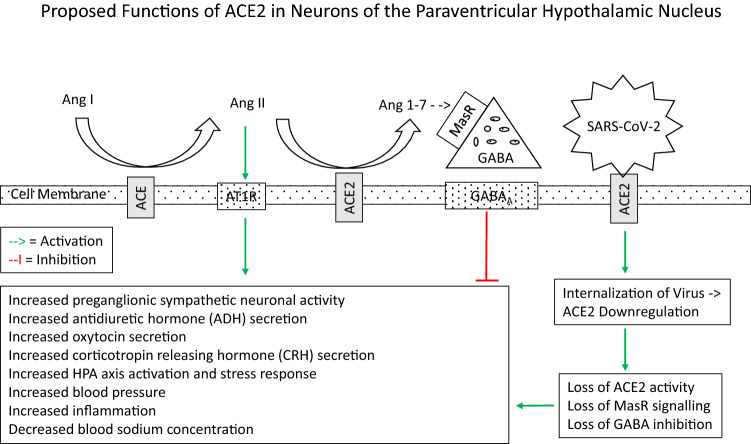Fig. 2.
Proposed functions of ACE and ACE2 in neurons of the paraventricular hypothalamic nucleus. ACE catalyses the breakdown of Ang I to Ang II. The latter is further cleaved by ACE2 to the peptide Ang (1–7). In contrast to Ang (1–7) (see Fig. 1), Ang II has an excitatory effect on neurons. Both in vivo and in vitro studies show that Ang II stimulates PVN neuronal activity (Bains et al., 1992; Cato & Toney, 2005; Li et al., 2003). This is likely through a direct effect on AT1 receptors (AT1R) which has been localized to neurons in the PVH and the circumventricular organs, including the organum vasculosum of the lamina terminalis, subfornical organ, area postrema, and median eminence (Sumners et al., 2020). An indirect effect involving inhibition of the astrocyte glutamate transporter has also been proposed (Stern et al., 2016). SARS-CoV-2 binds to the ACE2 enzyme and is internalized into the neuron. Infection of cells by SARS viruses including SARS-Cov-2 results in a decrease of ACE2 expression (Kuba et al., 2005; Triana et al., 2021) and loss of ACE2 activity (Glowacka et al., 2010; Haga et al., 2010). This is postulated to produce an increase in neuronal excitation over neuronal inhibition, with resultant increased neuronal activity (including presympathetic neuronal activity), neuroendocrine secretion, and hormone release. These and other downstream effects are listed in the figure

